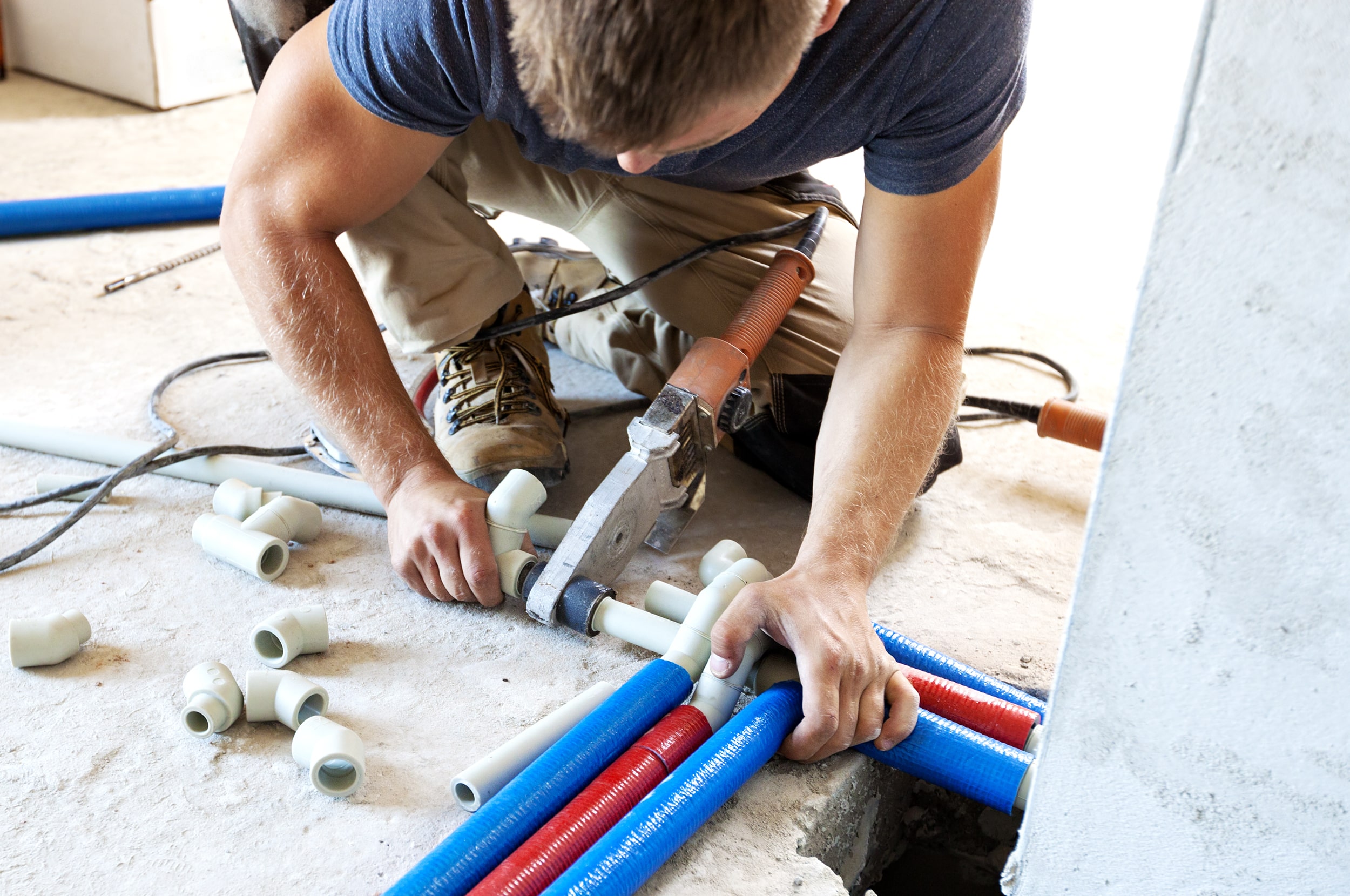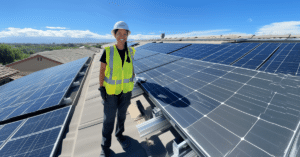People often wonder, what is the difference between PVC vs CPVC pipe and fittings? Is PVC a less expensive alternative? Can I replace one with the other? Are the fittings the same size? How different can they be?
In reality, these two materials are quite different. We’ll start with a little bit of chemistry and then describe the various uses of each material.
The Chemistry of PVC vs CPVC
Both materials are man-made thermoplastics composed of Hydrogen, Carbon, and Chlorine. The base material for both is PVC (polyvinyl chloride), but CPVC is taken through a chlorination process that makes it more rigid and also more tolerant of higher temperatures.
The added chlorine in CPVC (chlorinated polyvinyl chloride) results in a more flexible material with better insulating properties. This allows for expanded uses in potable water systems, fire protection and even industrial piping applications.
PVC vs CPVC Pressure Ratings
The pressure ratings for PVC vs CPVC change dramatically with temperature. For example, ¾” Sch40 PVC pipe is rated at an extremely high pressure of 480 psi at 73 degrees, but it has no high-temperature rating whatsoever.
The same size pipe in CPVC has a similar rating at 73 degrees, but is also rated at a higher temperature — 100 psi and 180 degrees. This second temperature rating for CPVC is what allows the material to be used for both cold and hot water applications.
PVC Defined
PVC has been widely used for decades as an alternative to copper and cast iron for DWV (drain, waste, and vent) piping. It is widely used in residential and light commercial buildings and ranges in size from 1 ½”, 2”, 3”, 4” to 6”.
For this application, there are a variety of fitting configurations that allow for a smooth flow of wastewater in gravity drainage systems. Both the pipe and the fittings are white in color, and the two are joined chemically by a process called solvent welding.
Solvent Welding
Solvent welded joints are airtight and watertight, making this an ideal material for sanitary drainage piping. This two-step joining method is simple and easy to apply. It involves a cleaner or primer, mostly made up of acetone, and cement that is applied to both the pipe and the fitting. The joint “sets” in about 20 minutes and cannot be taken apart.
Common Uses of PVC
PVC is also commonly used to vent high-efficiency appliances such as furnaces, boilers and power-vented water heaters. Because the temperature of these flue gases is relatively low (less than 130 degrees) and the material is not under pressure, this is a safe and relatively inexpensive way to carry flue gases and the resulting condensation. PVC has many other uses, but they are typically reserved for cold water applications.
CPVC Defined
Before the introduction of PEX (cross linked polyethylene) tubing, CPVC was a more dominant player in the market for potable water piping. It served as a less costly alternative to labor-intensive materials such as copper and galvanized steel.
The pipe and fittings are a milky color and the pipe will often have a yellow stripe. The joining method is similar to that of PVC, with slightly different cement types. The pipe is less likely to “sweat” since it acts as an insulator. This also makes it a good choice for both hot and cold water supply systems.
Additionally, the improved properties of the material allow for a thinner pipe wall, which improves flow in pressurized systems and gives it the same outer dimension as copper and PEX tubing in nominal sizes up to 2”.
Various types of pipe hangers and pipe insulation can be used for all three types of pipe. Some mechanical type fittings, like compression or push connect, can be used interchangeably to join copper, PEX and CPVC to one another in repair situations.
Common Uses of CPVC
CPVC is more versatile in the sense that it can be used in some unique applications. It is an approved sprinkler piping material (orange) by the National Fire Protection Agency (NFPA) for use on fire protection systems in residential and certain low-hazard occupancies.
It is also acceptable for use in hydronic HVAC systems for hot water and chilled water piping (dark gray-Sch40). It may also be used for a variety of industrial piping applications (light gray – Sch80), not only for water, but many other fluids due to its high corrosion resistance.
There is yet another use (purple) for reclaimed water which clearly differentiates it as non-potable, but can be used for irrigation of gardens and growing food.
Both of these materials, PVC and CPVC, have had a significant impact on the way we live and work. Although they are very different in their uses, they provide us a means to convey and conserve one of our most valuable natural resources — clean water.
A great resource for identifying different pipe materials, fittings, and how they work is Interplay Learning’s Plumbing Materials Overview course.

Frank Garro
Interplay Learning Plumbing & HVAC Expert
Frank is Interplay’s resident plumbing and HVAC expert. While he began his career in the plumbing trade, his passion for HVAC led him to become an Associate Professor and HVAC Program Chair, at Ivy Tech Community College. Frank is a Licensed Mechanical, Plumbing and Electrical Contractor, and owns his own mechanical services company. As an educator, Frank is a firm believer in teaching the fundamentals and has a gift for simplifying complex concepts.










